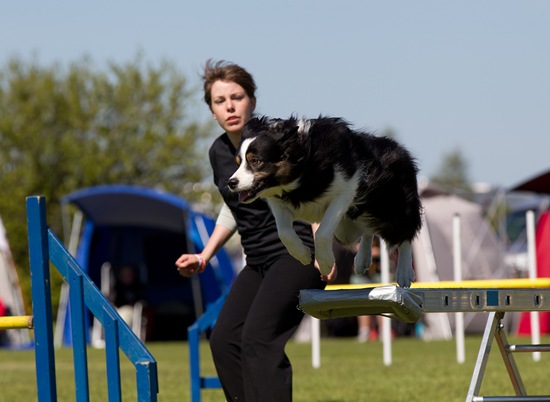Agility Quick Fixes
One of the things I have learned over the years is that there is no lasting quick fix in agility. If you want a fast and accurate performance you need to work on skills.
I often see handlers attend seminars in order to get help with any given problem they might be having. Lets say the dog turns wide and in order to get faster around the course the handler would like the dog to turn tighter. At the seminar the handler will get advice on how to handle the dog to tighten up the turn. The handler goes home happy because the advice given seems to work wonders. After a couple of weeks of training and trialing the dog begins to turn wide again and the handler seeks new advice on how to get tighter turns.
This is just one of many examples. Instead of wide turns the problem could be contacts, weave pole entries you name it.
My point is you can get hundreds of different handling strategies that might reduce the problem for a while, but what you really should be focusing on is the dog's skills. Working on skills and maintaining those skills takes time and dedication, but if you do so they will have a lasting effect.
If you want tighter turns you need to work the dog's understanding of how to turn. I understand why many handlers like to think this could be solved by handling the dog in a specific way, because teaching skills takes time. To turn tight the dog has to collect him self and that's a skill that doesn't necessarily come naturally. Temperament and body structure influences this ability a lot.
You need to work on the dog's understanding of how to use it's body in order to turn tight. To do this you have to eliminate jump height and speed and only work on one criteria at the time. By increasing the jump height and speed incrementally you'll reach your goal. Of course you need to work on your own timing as well. You are the one that have to cue the turn in time so the dog has a chance to act on the information given.
The same goes for contacts. Handlers often put out a treat or toy in front of the contact when training to speed up the dog's performance. It does seem to have the wanted effect at first, but when competing the toy/treat is obviously missing which slows down the performance. The handler gets confused and says 'but he dose it perfectly in training'. What the handler have missed is that the dog is dependent on the toy/treat in order to perform. The handler haven't taught the dog a specific skill, as the dogs was merely focusing on the primary award.
Skills can't be rushed. How long it takes to teach a certain skill is very independent. What might be easy for one dog to learn, might take longer for the other. When you have taught a skill you also need to remember to maintain it to prevent break down of behavior.
Suggested reading Summer Classes

